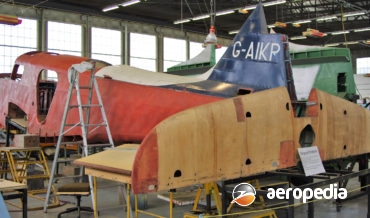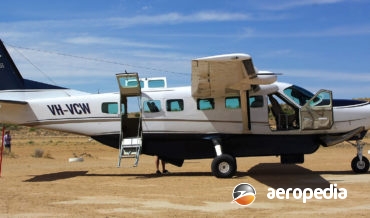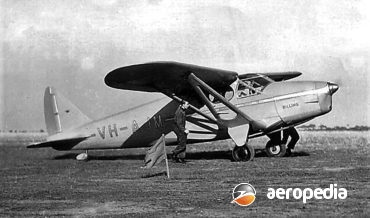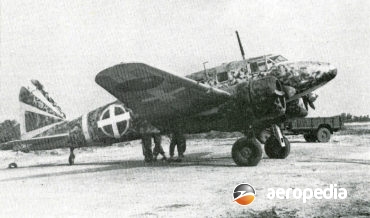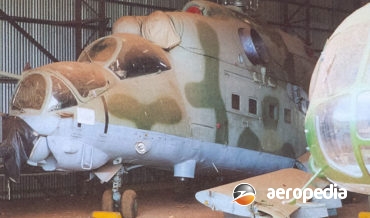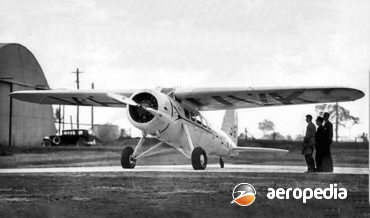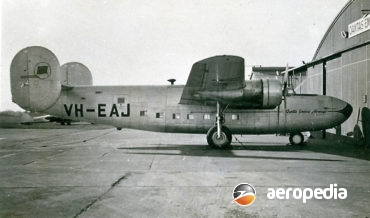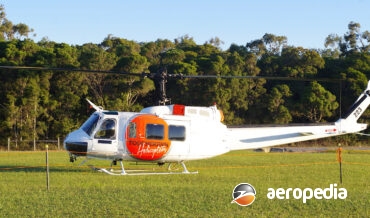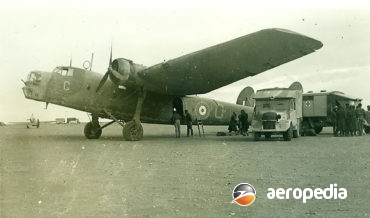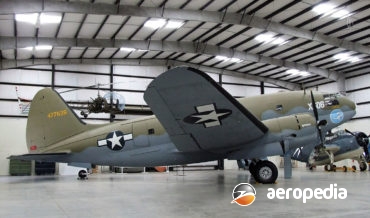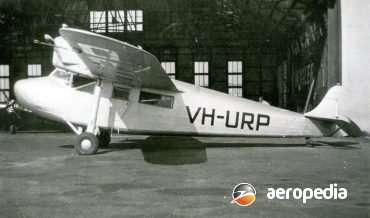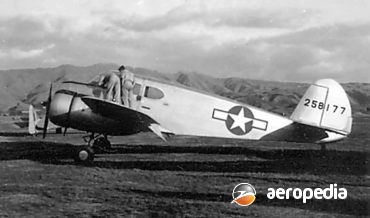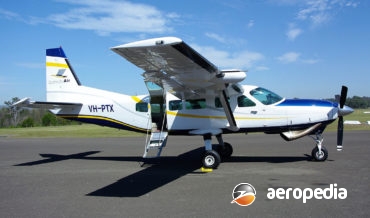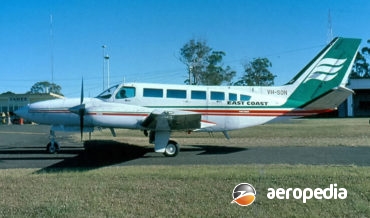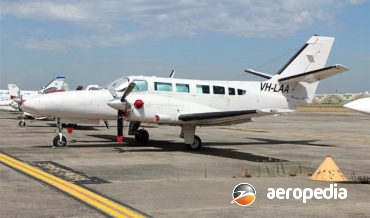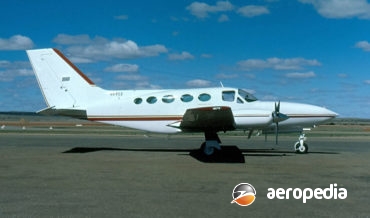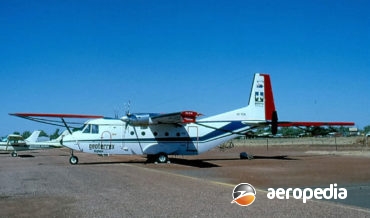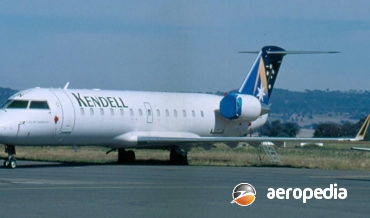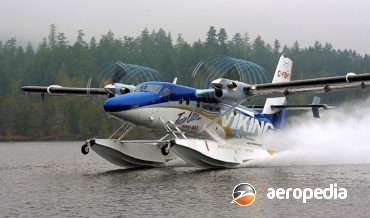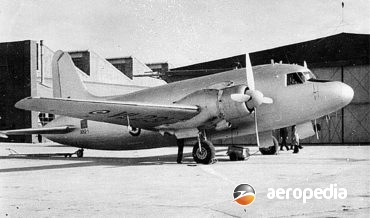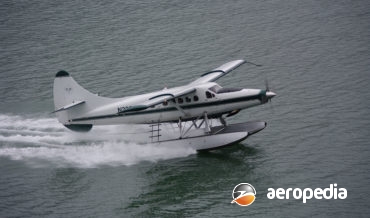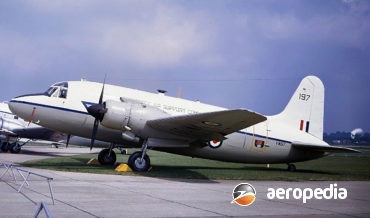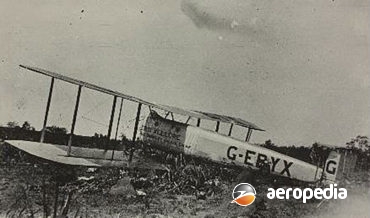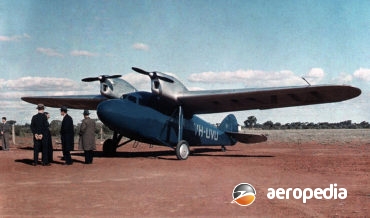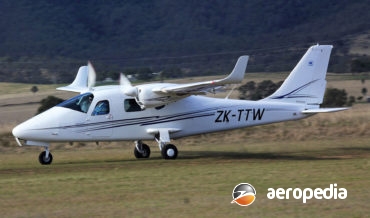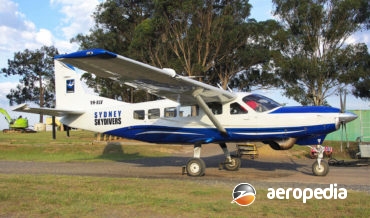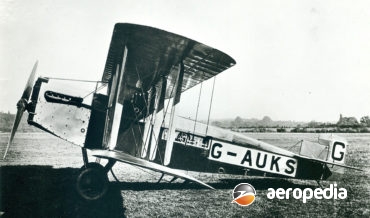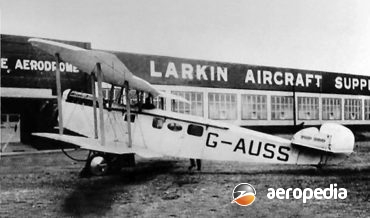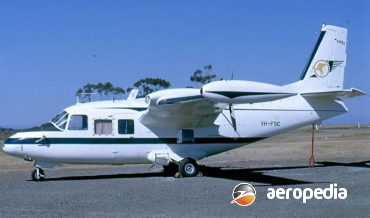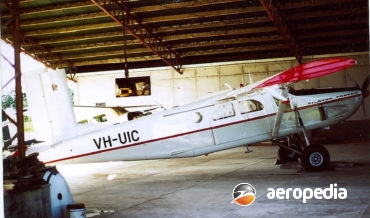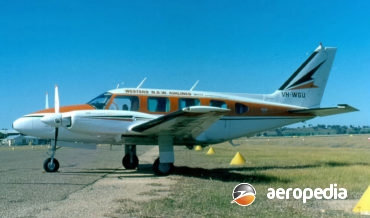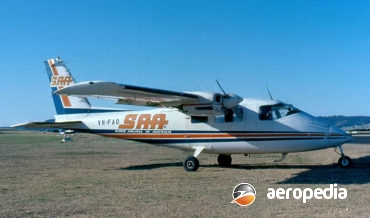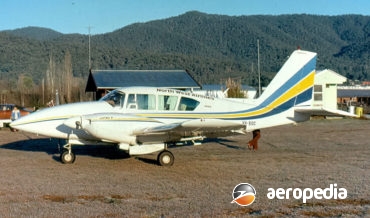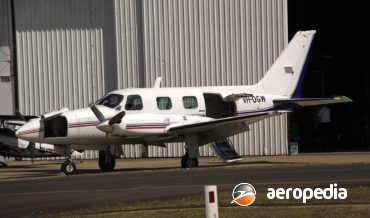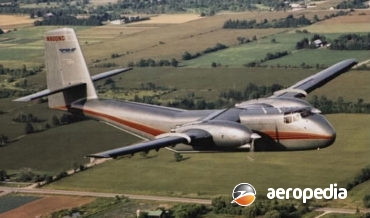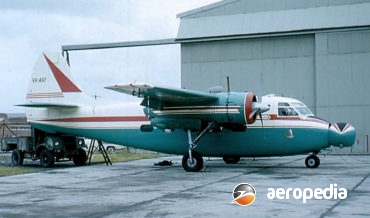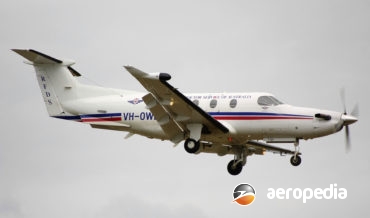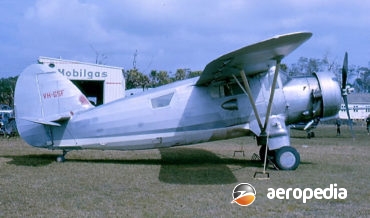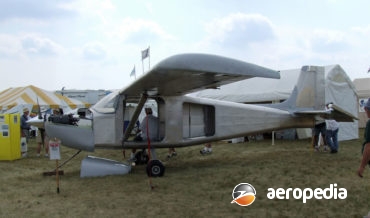All Contents
Contents
The AS-65 Consul was a conversion of the Airspeed Oxford for civil use by Airspeed Ltd of Portsmouth, and a total of 161 aircraft was produced.
David C. Eyre
- March 23, 2020
Following the success of the 208 and 208A, Cessna decided to extend the fuselage to permit a greater payload.
David C. Eyre
- March 23, 2020
The Heston Phoenix was built by the Heston Aircraft Co Ltd at Heston, the company rising out of the demise in 1934 of the Comper Aircraft Co Ltd.
David C. Eyre
- August 24, 2019
The Tachikawa Aircraft Co Ltd was founded in 1924 and was basically known for producing primary trainers for the Japanese Air Force from 1927. In 1940 work began on the Y-39, a low-wing twin-engine monoplane, which was built in a variety of variants to meet a number of needs.
David C. Eyre
- May 19, 2019
The Hind was a second-generation Soviet helicopter gunship which originally emerged as an heavily armed armoured transport capable of carrying a crew of four and eight assault troops.
David C. Eyre
- May 19, 2019
The prototype of the Lockheed Vega, powered by a 168 kw (225-hp) Wright J-5 radial engine, was flown for the first time on 4 July 1927. A Vega was the first aircraft to fly over both the north and south pole.
David C. Eyre
- May 19, 2019
The requirement for a very long-range transport quickly became apparent early in world War II and , because of its roomy fuselage and good cruising speed, the B-24 series was a logical aircraft to develop to meet this requirement.
David C. Eyre
- May 19, 2019
In June 1955 the Bell Helicopter Company won a US Army contest to design a new utility helicopter.
David C. Eyre
- May 19, 2019
The Type 130 was designed by the Bristol Aeroplane Co Ltd to meet Air Ministry specification C.26/31 as a replacement for the Vickers Valentia and to meet a requirement of the RAF for a bomber able to carry 907 kw (2,000 lb) of bombs and having a crew of four;
David C. Eyre
- May 19, 2019
One of the most successful freight aircraft available to operators in the 1930s and 40s, the Curtiss C-46 Commando was produced by the Curtiss-Wright Corp in 1936 when it embarked upon the design of a transport known as the CW-20 which had 20 berths as a night sleeper transport, and
David C. Eyre
- May 17, 2019
During 1933 Sir Charles Kingsford Smith was making preparations to make a barnstorming tour of New Zealand with his Fokker F.VII/3m VH-USU Southern Cross and a new aircraft which had been designed to his specifications by Wing Command L J Wackett.
David C. Eyre
- May 17, 2019
Affectionately known as the Bamboo Bomber, cloth moth, and double breasted Stearman, the Cessna Bobcat, known as the Crane in RCAF service, was built by the Cessna Aircraft Company at Wichita, Kansas, some 5,402 examples being completed.
David C. Eyre
- May 17, 2019
The Cessna Caravan I was a completely new utility transport designed by the Cessna Company, and was the largest single-engine aircraft in the company’s line.
David C. Eyre
- May 17, 2019
Following commencement of delivery of production aircraft late in 1976, the Model 404 Titan was offered in a range of variants designed specifically to meet the needs of businessmen and commuter airlines which required a large twin-engine aircraft with normally aspirated engines rather than turbines.
David C. Eyre
- May 17, 2019
The Model 406 Caravan II was developed as a joint venture between Cessna and its French associate, Reims Aviation, for the utility market. Reims has built over 6,000 Cessna-designed aircraft over the years and it was initially a joint concern but in 1989 Cessna sold its interest to the
David C. Eyre
- May 17, 2019
On 10 December 1969 Cessna announced it was introducing a new pressurised twin-engine aircraft known as the Model 414 and this aircraft combined the basic fuselage and tail unit of the Model 421 with the wing of the Model 401 fitted with two Continental TSIO-520-J turbo-supercharged engines driving three-blade constant-speed
David C. Eyre
- May 17, 2019
The C212 Aviocar was a development of the CASA Aviocar STOL military aircraft designed to replace the Junkers Ju-52 and the Douglas C-47 in Spanish Airforce service.
David C. Eyre
- May 17, 2019
Produced by the Regional Aircraft Division of Bombardier Inc of Canada, the Regional jet is a development of the Challenger to meet the requirements of regional airlines.
David C. Eyre
- May 17, 2019
Production of the DHC-6 series by de Havilland Canada concluded in 1988 after 844 examples were built at Toronto, production running from 1965 to 1989.
David C. Eyre
- May 8, 2019
In October 1944 the British Ministry of Aircraft Production issued a specification for a short/medium haul airliner and VICkers produced the Viking, the first of three prototypes (G-AGOK) designated Type 491 being flown on 22 June 1945 at Wisley.
David C. Eyre
- May 8, 2019
The Vazar Dash 3 is a conversion by the Vardax Corporation of Bellingham, Washington, of the de Havilland DHC-3 Otter to take a turboprop powerplant, the company in recent years being known as Vazar Aerospace.
David C. Eyre
- May 8, 2019
Following the success of the Viking, RAF Transport Command ordered a new variant suitable for the role of military ambulance, freighter, glider-tug, troop carrier, and dropping supplies.
David C. Eyre
- May 8, 2019
The Type 134 Vellore I was designed by Rex Pierson, Chief Designer of VICkers Aviation at Weybridge in Surry to meet an Air Ministry Specification (34/24).
David C. Eyre
- May 8, 2019
In the early 1930s Messrs Leo Turl and Frank Gannon took over the Mascot hangar of General Aircraft Co. In November 1935 Mr J C Carpenter joined the company and Tugan Aircraft Ltd came into being.
David C. Eyre
- May 8, 2019
The P2006T is the first entry by the Tecnam company in Italy to produce a cheap twin-engine light aircraft. Of all metal construction, it is fitted with two Rotax 912S engines, is of high wing configuration, and has a fully retractable tricycle undercarriage.
David C. Eyre
- May 8, 2019
In the United States a number of conversions have been made to aircraft to change engines and increase performance. One company carrying out this type of conversion is Texas Turbine Conversions which converts de Havilland Otters to turbine power, and fits Honeywell TPE-331 turboprops to Cessna 208 and 208B Caravans
David C. Eyre
- May 8, 2019
The Wallaby, which was based on the Sopwith B.1 Bomber, was similar to the Sopwith Atlantic, which had been used by Harry Hawker in an unsuccessful trans-Atlantic attempt.
David C. Eyre
- May 8, 2019
In 1920 the British Air Ministry published rules for a Small Commercial Aeroplane Competition and a number of designs were entered, including the Westland Limousine and the Sopwith Antelope.
David C. Eyre
- May 8, 2019
Derived from the Piaggio P-136-L2 amphibian, and employing a similar gull wing and pusher engine installation, the prototype P-166 was flown for the first time on 26 November 1957.
David C. Eyre
- May 8, 2019
Pilatus Flugzeugwerke was formed in December 1939 under the leadership of M E Buehrle, the Swiss industrialist and owner of the Oerlikon company.
David C. Eyre
- May 8, 2019
With numerous Piper Apaches and Aztecs having been adapted for commuter airline type work in the early 1960s, it was expected, when Piper unveiled the Navajo as the first of a new breed of twins, that variants would be built to meet the needs of the growing commuter market.
David C. Eyre
- May 8, 2019
The P-68 series of light transports was designed by Professor Luigi Pascale and placed in production in Italy by Partenavia in 1972. The prototype (I-TWIN) was flown on 25 May 1970, and this was followed by ten pre-production aircraft, these having a slightly shorter fuselage than the production aircraft, the
David C. Eyre
- May 8, 2019
The Wilga (ie Thrush) was designed and built in Poland by Polskie Zaklady Lothicze (PZL) as a light general purpose utility aircraft and the prototype, known as the Wilga I (SP-PAZ), fitted with an indigenous 145-kw (195-hp) Narkiewicz WN-6B engine, flew for the first time on 24 April 1962.
David C. Eyre
- May 8, 2019
Developed from the Piper Apache, and using many common components, the prototype of the Aztec series was flown for the first time in 1959.
David C. Eyre
- May 8, 2019
The Mojave was designed by Piper to carry a crew of two with dual controls, and five passengers in the main cabin.
David C. Eyre
- May 8, 2019
Under a supplemental type certificate, Pen Turbo Aviation of Cape May Airport, New Jersey early in the 21st century undertook a re-engineering of the DHC-4A Caribou as a result of market demand for a turbine-powered variant of the Caribou.
David C. Eyre
- May 8, 2019
At the end of World War II Percival Aircraft Ltd produced a five-seat commercial aircraft known as the P.48 Merganser, which was of all-metal, stressed skin construction with fabric covered control surfaces.
David C. Eyre
- May 8, 2019
In 1989 the Swiss Pilatus concern announced it was developing a pressurised fast utility transport powered by a single Pratt & Whitney Canada PT-6A turboprop as a competitor for the Cessna 208 Caravan I, and the Beech King Air 200.
David C. Eyre
- May 8, 2019
The Norseman was developed by Noorduyn Aviation Ltd Ltd, this company being founded by Robert Bernard Cornelius Noorduyn in 1938 after his former company, Noorduyn Aircraft Ltd, was re-organised.
David C. Eyre
- May 8, 2019
The Yukon was designed with versatility as a utility transport to the fore. It can be fitted with either of two Lycoming engines, the O-360 or the O-390.
David C. Eyre
- May 8, 2019
Recent Comments
Archives
Categories
- No categories
Categories
- No categories
Latest Posts
Newsletter

